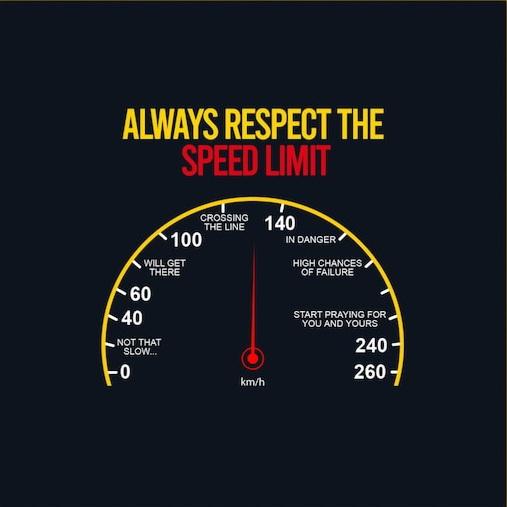Overspeeding, the act of driving above the posted speed limit, is a major contributor to road accidents and fatalities, significantly impacting road safety due to the reduced reaction time and increased stopping distance it creates at higher speeds.
Key points about overspeeding:
Increased Crash Risk:
Driving too fast drastically increases the likelihood of a collision, as it leaves less time to react to unexpected situations like sudden braking or obstacles on the road.
Severity of Accidents:
Even minor accidents can become more severe at high speeds, leading to greater injuries and potential fatalities.
Factors Contributing to Overspeeding:
Factors like impatience, urgency, lack of awareness of speed limits, poor road conditions, and a false sense of confidence can contribute to overspeeding.
Consequences of Overspeeding:
Legal Penalties:
Drivers caught exceeding speed limits face fines, license suspension, and potential legal repercussions.
Insurance Implications:
Overspeeding can lead to increased insurance premiums or even policy cancellation in severe cases.
Social Impact:
Traffic accidents caused by overspeeding can have significant social consequences, impacting families and communities.
Prevention Measures:
Educate Drivers:
Raising awareness about the dangers of overspeeding through campaigns and driver education programs is crucial.
Strict Enforcement:
Implementing stricter traffic laws and increased police presence to enforce speed limits.
Road Design:
Designing roads with features like speed bumps and traffic calming measures to discourage excessive speed.
Technology:
Utilizing speed limiters and advanced driver assistance systems to monitor and regulate vehicle speed.
In conclusion, overspeeding is a serious road safety concern that can be mitigated through responsible driving behavior, awareness campaigns, and effective enforcement of traffic laws to ensure everyone's safety on the roads.

